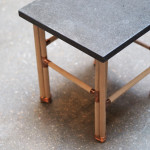 To make the stool you will need:
To make the stool you will need:
1 Tab box
Japanese saw
Brush, pencil, meter
14 mm wood wick
Drill or column drill
88 boulevard de Picpus - Paris 12è - 7j/7 de 10h à 19h - Tél. 01 43 46 35 32
 To make the stool you will need:
To make the stool you will need:
1 Tab box
Japanese saw
Brush, pencil, meter
14 mm wood wick
Drill or column drill
Cement is a 19th cen tury invention, it is a binder that hardens under the action of water, today most often used in the manufacture of reinforced concrete, or mortar.
tury invention, it is a binder that hardens under the action of water, today most often used in the manufacture of reinforced concrete, or mortar.
It is composed of limestone and clay which, mixed with water, is taken and allows to combined sands and aggregates between them and thus constitute real artificial rocks, concretes and mortars.
Cement is a concrete constituent. It is a mixture of clay and limestone through which the different components of concrete can bind together.
The concrete is the material made from a mixture of several constituents: water, sand, gravel and cement.
https://www.youtube.com/watch?v=TquizXjr8Pw
Réalisation : Simon Gemelli – Bande Annonce France 2/ France 4 Tournoi des 6 Nations 2018
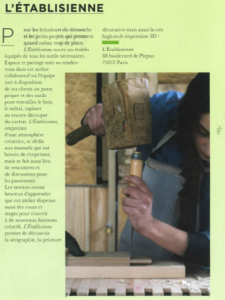
“L’établisienne, empreinte d’une atmosphère créative, se dédie aux manuels qui ont besoin de s’exprimer, mais se fait aussi lieu de rencontres et de discussions pour les passionnés”
The glue was invented in ancient Egypt and has continued to evolve and improve, it is divided into different categories, they are three in number: the reactive adhesives, non-reactive adhesives, coatings and mortars.
The non-reactive adhesives when applied, are already present in their final chemical state. No chemical reaction thus occurs in the physical curing process is done by evaporation of solvent, water or by cooling. Non reactive sizes have a variety of adhesion properties, good flexibility and the bonding can be used in multiple applications.
There are four main types of physical curing adhesives: aqueous or solvent-based adhesives which harden by evaporation of water or solvent contact adhesives hot melt adhesives or “Hot Melt” the hotmelt self-adhesive or “HMPSA”. Reactive adhesives like the non-reactive sizes require a chemical reaction in order to pass from the liquid to the solid state.
Once cured, have generally a high resistance to temperature, moisture and many chemicals. The different types of chemical curing adhesives are: polyurethane adhesives mono and bi-component; adhesives based on epoxy resin mono and bi-component; cyanoacrylates; glues based silylated polymers; silicone adhesives. Plasters and mortars on them, they are formulated based plaster or cement for laying tiles or preparation of floors and walls before the establishment of a coating.
We offer training on how to use certain tools of the workshop, review the concepts learned or improve certain practices.
Three types of online workshops are offered but only in french :
<iframe frameborder=”0″ width=”480″ height=”270″ src=”//www.dailymotion.com/embed/video/x2r451d?start=127″ allowfullscreen></iframe><br /><a href=”http://www.dailymotion.com/video/x2r451d_la-passion-de-la-brocante_news” target=”_blank”> La passion de la brocante</a> <i>par <a href=”http://www.dailymotion.com/francetvinfo” target=”_blank”>francetvinfo</a></i>
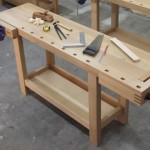 Traditional tools are included in the rental self-service. Unless otherwise stated the use of power tools can only be done on site.
Traditional tools are included in the rental self-service. Unless otherwise stated the use of power tools can only be done on site.
The price for digital tools depends on time/machine
Consumables (sandpaper, nails, glue, screws …) are not included but available for purchase.
If you can not find the tool or accessory you need below, please tell us …
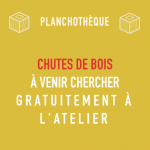
You are more and more members to come to work or learn at L’Établisienne. So we produce together more pieces of wood, which are in a first time reused for Upcycling or tests.
But when they can no longer be useful to us, they are wastes.
So L’Établisienne launches PLANCHOTHEQUE, for students and tinkerers who want to recover free scrap wood.
There’s something for everyone, you just have to search to find your happiness.
To be informed of the next appointments PLANCHOTHEQUE, follow us on our Facebook page of L’Établisienne.
Tapestry tools:
Available consumables:
A material long used by men
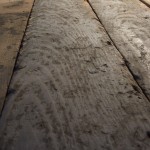
Wood has always been favored for construction, furnishing, or for insulation or heating. Mulberry bark was used for paper by the Chinese. Also, wood always had an important place in art.
Wood is an essential material in architecture, used in every type of construction from parquet floor to framework. Houses and buildings are always more or less made of wood, as well as pieces of furniture, boats, musical instruments...
Wood is used so much because it has many benefits : robust, insulating, durable, ecological thanks to sustainably managed forests, also pleasant to use. Moreso, some problem inherent to its use have now been counteracted : for instance, wood-eating organisms are now disposed of with specific products.
The cabinetmaker and the carpenter don’t work the same way. The carpenter makes pieces of furniture or solid wood structures, while the cabinetmaker, after having built a wood structure, covers it with a thin layer of fine wood, called veneer. The cabinetmaker ths has to pay attention to the different natures and shapes of wood all throughout the process of creation.
Marquetry is another wood art, it’s a decor the marquetry cabinetmaker builds from veneer, after a drawing, in order to give them a particular shape. He then assembles them, forming a whole that will be pasted on a support, like a painting or a piece of furniture.
That art developed especially during the Trecento in Italia, then was used a lot for Louis XIV and Louis XV style furniture.
The different types of wood
Based on the weather, different trees develop and generate different types of wood. With a temperate climate, we will have conifers such as pine, and fir, or hardwood such as aspen or birch. Some, like fruit trees, among others, are not grown for their wood, like cherry for example, but they can still be useful in cabinetmaking and marquetry.
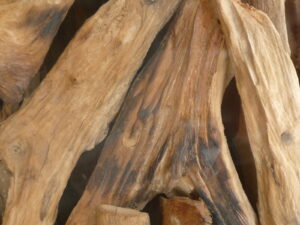
The most common types of wood
Oak is the traditional type of wood for framework, along with chestnut and spruce, for they don’t rot. Oak was also used a lot in naval construction.
Charm and maple are very useful for heating, because they produce more heat per cubic meter than most types.
Cabinetmaking types of wood
Cherry is a light brown wood that can replace mahogany, and is used to make solid furniture in carpentry, as well as veneering.
Walnut is a low density, colorful and veined wood, favored for veneering.
Maple is a very light, almost white wood, and one of the most favored type for cabinetmakers.
Plane tree is a light, solid and moisture resistant type, although a bit dificult to use sometimes.
Fir is a light and quite solid wood, used for solid furniture, and also for parquet floors and stairs.
Exotic wood, such as mahogany, ebony, yew and lemon tree, is especially used in marquetry[:] Read more…
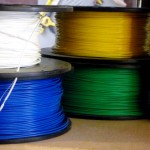 PLA, polylactic acid, is a fully biodegradable polymer resulting from the fermentation of sugar or starch as a result of synthesizing lactic acid bacteria.
PLA, polylactic acid, is a fully biodegradable polymer resulting from the fermentation of sugar or starch as a result of synthesizing lactic acid bacteria.
PLA is used in food packaging and in the manufacture of many injected, extruded or thermoformed articles.
The PLA is the material used by the 3D printer at l’Etablisienne.
You will find the description of the other “printable” materials on website 3ders.org
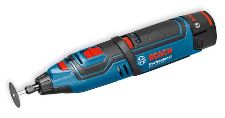 Powerful and quick rotating motor (up to 35 000 r / min) for fast work progress. Cutting, grinding, polishing …
Powerful and quick rotating motor (up to 35 000 r / min) for fast work progress. Cutting, grinding, polishing …
 This drill press can be tilted to the right and left, front-back translation and retractable. The table and the spindle are very easily adjustable.
This drill press can be tilted to the right and left, front-back translation and retractable. The table and the spindle are very easily adjustable.
For a special emission , Michel Cymes and Stéphane Thebauten came visit l’Etablisienne. Follow them with HLProduction video for La Maison France 5.
A report made by Marie Clair idées to discover the Établisienne.
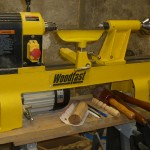 Training lathe is provided on request during a workshop .
Training lathe is provided on request during a workshop .
This machine is available for rent for € 1 additional hour.
Distance between centers: 410 mm
Height of centers: 152 mm,
Diameter 300 mm above the bench
Diameter 235 mm pitches in the tool holder.
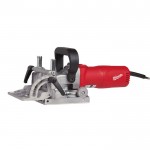
Compact and lightweight for great handling and easy use
A reclining sole from 0 to 90 degrees with locking lever and quick stops on 22.5 degrees -45 degrees AND 66.5 degrees
To learn how to use this tool : watch the on line training (only in french)
Cutting Capacity at 90 ° 51 mm
Depth of cut at 45 ° 40mm
Parallel stop
Guide rail
Workshop : Circular saws
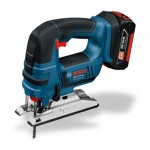 Jigsaw cordless piercing extremely compact: perfect handling, even for curved cuts in tight spaces. Unobstructed view of the cutting line with LED lighting and powerful function of wind performance chips.
Jigsaw cordless piercing extremely compact: perfect handling, even for curved cuts in tight spaces. Unobstructed view of the cutting line with LED lighting and powerful function of wind performance chips.
Gradual easing function for a perfect primer for sawing and precise plunge cuts.
Workshop : Cutting and assembly ; this tool is also used to cut cardboard
Adjustable upwards by 10° and downwards by 50°
Source : Manuel TG 125 et http://www.proxxon.com/eng/html/27060.php
Source : Manuel Proxxon et http://www.proxxon.com/eng/html/27070.php
Inspired by the soul of the place, with Jean of Ateliers Jisseo, we have created a new range of furniture.
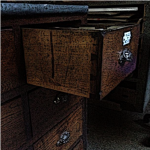 To begin with, we are pleased to provide you with the plans of the most iconic furniture of the workshop Etablisienne: the counter.
To begin with, we are pleased to provide you with the plans of the most iconic furniture of the workshop Etablisienne: the counter.
Plans OpenRepro countertop PDF:
openrepro-comptoir-l-etablisienne-v20901
Five breakers are available in the workshop.
To discover this tool, we offer a two hour collective training.
900 W 1250 W or 1400 W engines and constant electronic regulation for a consistent work progression.
Micrometric adjustment system for an accurate adjustment of milling depth in 1/10mm tiers with fixed diving system.
Accessories available:
> Copyring ring 13,17,24, 27, 30 and 40 mm
In PDF, the lists and description of Strawberries-to-roll and Strawberries-without-rolling
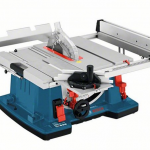 This tool is restricted to those who have completed training or can demonstrate previous experience
This tool is restricted to those who have completed training or can demonstrate previous experience
Table size 584 x 759 mm
Rear, left and right extension
Self-adjusting parallel stop for precise cuts
Precise adjustment of the angle of the blade
The main natural fibers
Cotton is the most used in the world, with 25 million tonnes produced every year. Cotton fiber adheres to the cottonseed, then, before being used, it is separated from it and cleaned to remove impurities. The fibers are then compresses, forming the cotton we use every day.
Linen has been grown for millenia, and the Egyptians used it as strips to envelop mummies. Linen fabrics, smooth, are now used in the confection of clothes. You must wait for three months after planting for harvest, then the fibrous parts of the plant are separated, forming fabrics.
Wool is a very flexible, sheep-produced fiber. After the shearing, the wool is spun, and you get threads used for woolen fabrics.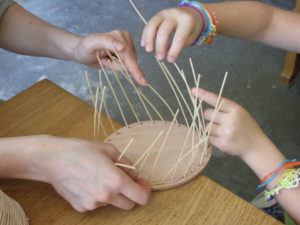
Silk is produced by a silkworm called Bombyx mori, which eats blackberry bushes as a caterpillar. It then secretes a protein that becomes solid when in contact with air, and a thread made of two strands is formed. Another secretion, sericin, unites the two strands together, forming the cocoon. Then, you takes the very thin threads to make silk.
Palm tree leaves produce fibers, once dried and cut in strips. They are used in some coutries, especially in South America, to be weaved, for instance to make hats.
Rattan is a climbing vine produced by a tree from the palm species. It grows in tropical and marshy regions and is very flexible and resistant. It grows quickly, and, unlike bamboo, for instance, rattan is a full material that retains elasticity. It is very used in basketry.
A cork oak cycle lasts 9 years, the next extraction can therefore only be proceded nine years after the first stripping. The extracted cork will only be high-quality and able to be worked and transformed by the time the tree is about 45 years old. From that moment, it will be called reproduction cork, and the extraction process lifting. A cork oak lives for about 200 years ; it is therefore possible to extract cork from the same tree about 15 times during the tree’s lifetime.
The uses of cork
Cork is a flexible, low-density, non-flammable and water resistant material. It can sometimes be used to make insulating panels, in granular form. However, it is mainly used to make corks : 80% of the annual production is used for wine bottles.
It is also used, in less important proportion, for shoe soles and some music instruments such as clarinet and saxophone. It even replaces the PVC used for aircraft fuselage since it possesses some of the latter’s proprieties.
A good read about this (only in French) :
Le liège, le matériau du futur ? (Cork, the material of the future ?)
Nowadays, cardboard is made from pulp. It is obtained from the cellulose fibers of wood, put in a great amount of water (and possibly other products, based on the type of cardboard). This process allows the production of a great quantity of paper, and also the choice of density. The sheets obtained are assembled by collage, forming cardboard.
Nowadays, if packaging is still the main use for cardboard, along with insulation and edition, other uses are explored : a lot of designers use cardboard for pieces of furniture, which are quite robust and can bear several dozen kilos.
A recyclable, environmentally friendly material
Cardboard is a material with many benefits : it is light and easy to handle, flat therefore easy to store. It’s fabrication doesn’t include the use of dangerous or pollutant products. From cardboard, it is possible to make pulp, therefore to make cardboard again, with a minimal impact on environment.
One weak point of cardboard is its weakness against humidity.
Creating glass
The materials used in the creation of glass are mixed : silica, soda and limestone, in big tank furnaces, at a temperature of about 1500°C. The melting paste then goes through heated conduits and then in molds, where it is blown in order to give it a shape. Based on the products added or not to the melting paste, the glass can be colored or transluscent.
Modern uses
Glass is nowadays used a lot in architecture : many structures offer at least one front made of glass, from century old buildings like the Grand Palais and the Galeries Lafayette to contemporary projects that sometimes seem to be made only of glass, such as “skyscrapers”. Glass is also still used for decorative purposes : stained glass and as a support for painting.
Stained glass is made thanks to a particular technique, and the glass-maker needs to respect a few rules : he first needs to make a model of his creation, to know what it will look like. Then, he must create a “carton” showing the position of every piece of lead. Finally, he must choose the colors used in his creation, to know what materials he will add to the melting paste.